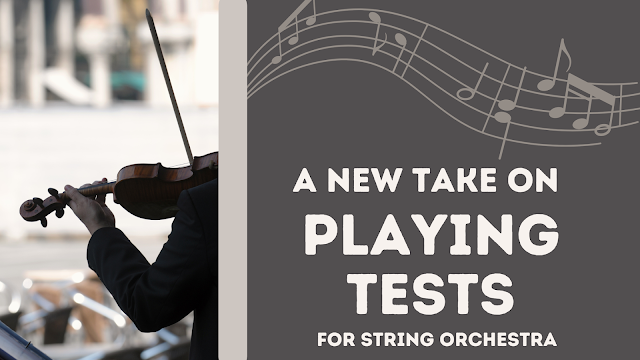I incorporate a lot of games into my rehearsals for many reasons. Gamification has been shown to have many benefits in education: According to https://elearningindustry.com/science-benefits-gamification-elearning, gamification (while this website is addressing e-learning, gamification can also be implemented with the same benefits without using tech):
- Increases learner engagement
- Makes learning fun and interactive
- Improves knowledge absorption and retention
- Gives learners the opportunity to see real world applications
- Enhances the overall learning experience for all age groups
One of the best books I've read for teaching is 'The Little Book of Talent" by Daniel Coyle. It's a fast, easy read and contains many useful tips for coaching students to reach their potential. My favorite quote from the book is:
“Good
coaches share a knack for transforming the most mundane activities – especially
the most mundane activities - into
games.”
I love playing games and my brain is always coming up with fun new games to try. Here are a couple of games I have recently used in my rehearsals:
LIMBO
Limbo is orchestra? It works. And it is fun and hilarious and it gets students working extra hard to play in tune!
To introduce the game I showed this video:
We then discussed how the girl in the video has to practice and push herself in order to do the limbo in such an amazing way.
The limbo song goes, "How low can you go?" Our game was about "How FAR can you go"...before your section hits a note out of tune. I chose a passage from our concert music and had each section play for as long as they could without playing a note out of tune. As soon as I heard an out-of-tune note, I stopped the section and counted how many measures they were able to play in tune. After listening to each section, I ranked them by how far they were able to play.
Next I had a volunteer come up from each section to do the limbo....for real...with the music going in the background from YouTube (https://www.youtube.com/watch?v=T54zrvXYob4). To make it more of a game, I altered the height of the stick based on the results from each round. For example, if 1st violins won the round, they would get the limbo stick at the tallest point. 2nd place had to try to limbo with the stick lower by one notch...and so on. As we continued with the game for a few rounds, the limbo stick would get lower and lower depending on how sections scored each round. It was really fun to see how low students could go on the limbo...and how far they were able to get in their concert music with great intonation. It was so fun to watch...I kept getting groups of teachers and students watching from the doorway.
This game is easy to play with little to no preparation. I used an empty string tube for my limbo stick and drew notches on the white board to designate the levels.
SPELLING BEE
Last week I got the idea to do a 'spelling bee' in my class...but I didn't want it to put too much pressure on individual students. I think there are many ways you could do a 'spelling bee' type of game, but here's how I did it:
Intro the game with a video (optional...I just like to use a lot of videos). I showed a very short clip from the very end just to help students remember what a spelling bee is.
Orchestra version of spelling bee is a bit different...ours is an INTONATION BEE. Each section plays the 'words' (which are a sequence of notes selected from our concert music). If the section plays in tune, they get a point....if not, they don't get a point. I didn't do this like a traditional bee with one student at a time because the rest of the students would get BORED.
To prep the game the made simple into slide:
Then I typed a list of 'words' (note sequences) in PowerPoint.
To play the game, I showed one word at a time. I demonstrated how to play the sequence, then had the class practice it together. Then I listened to each section play the 'word' and gave them a point if they played it in tune (as a section). I don't like to have students sitting doing nothing...so my pacing was QUICK. I made sure the game moved fast and kept everyone involved.
This game helped students drill some of their tricky measures. In the middle of the game, some students started recognizing the ' words' and blurted out...'Hey! That's from our concert piece!"
I could have just showed the notes and made them practice the sequences...but this kept students more engaged, more motivated, and it was fun!







